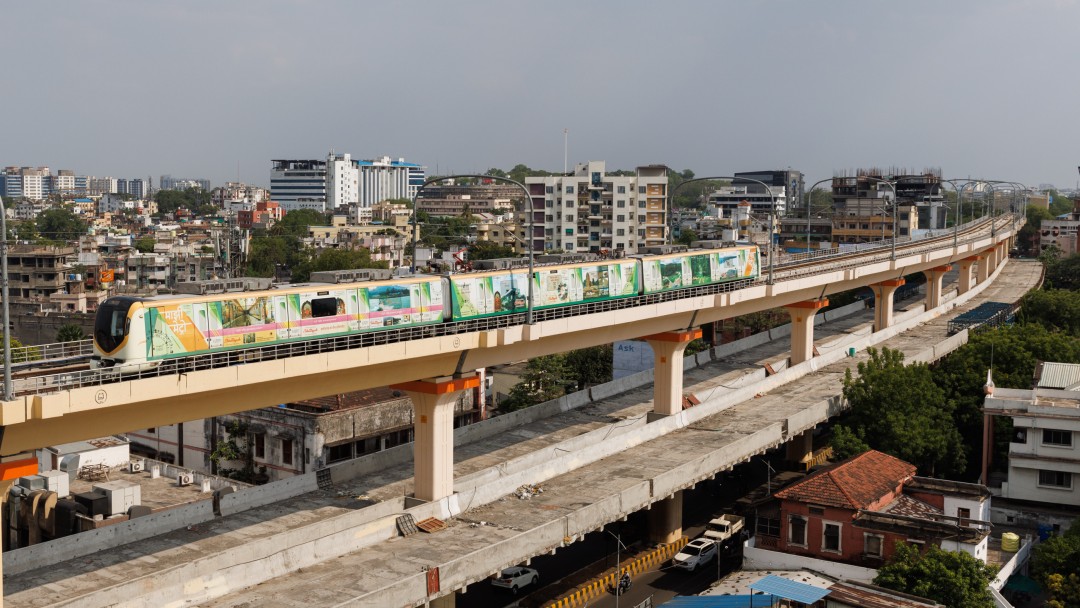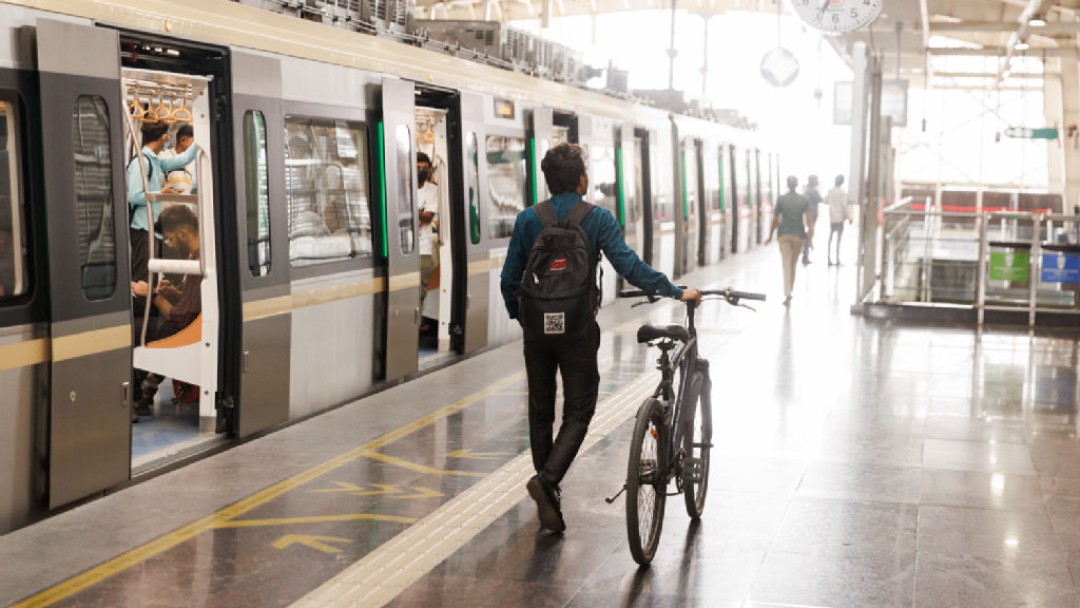
Motorcycles and cars account for much of the traffic in the Indian megacity Nagpur. In order to reduce congestion, cut down on CO2 emissions and improve the air quality, Nagpur has been working on building a public transport network for several years. The lion’s share of the financing for the Maha Metro came from KfW, which issued a promotional loan of over EUR 500 million. The French development agency AFD has also invested EUR 130 million.
With a population of around 2.4 million, Nagpur is an important economic and cultural centre in the state of Maharashtra, right at the geographic heart of India. However, until a few years ago, local public transport only accounted for around 10% of transport usage in the lively industrial city. Most journeys – around three quarters – were made with private vehicles, particularly two-wheelers.
To change this state of affairs, the city has built a metro network to make transport in Nagpur more climate-friendly and attractive. Close to 40 kilometres (25 miles) of metro line were installed along two large corridors (North–South and East–West). The metro is an elevated railway, saving space as the network is expanded.
It also includes around 40 stations and two depots for maintaining the trains. Investments are also being made in infrastructure for non-motorised transport (bays for taxis, parking spaces for cars and two-wheelers and charging stations for e-bikes). The aim is for electric buses to improve first and last mile services so that the metro is connected to other modes of transport, gradually creating a user-friendly, integrated public transport system.

The metro is run primarily on solar energy. Photovoltaic systems on the station roofs and solar panels running along the routes are expected to generate 65% of the power needed. Wastewater recycling, hanging gardens on the tracks’ pillars, and 5,000 trees being planted to replace those removed during construction round off the plan of action to make the network green and sustainable. Significantly more trees are planted than felled in the process.
According to the preparatory study’s projections, 600,000 people are expected to travel by rail in the city every day by 2030, which will have a noticeable impact in freeing up the roads. The plans for the expansion and passenger volume have changed somewhat due to the coronavirus pandemic, which, as in many other places, brought life in Nagpur to a standstill at times. But the goal remains the same – to create an attractive alternative to motorised personal transport. “The metro in Nagpur thus will help make this a city fit for the future,” says the KfW portfolio manager in charge, Patricia Immler.
Share page
To share the content of this page with your network, click on one of the icons below.
Note on data protection: When you share content, your personal data is transferred to the selected network.
Data protection
Alternatively, you can also copy the short link: https://www.kfw-entwicklungsbank.de/s/enzBYVKa
Copy link Link copied